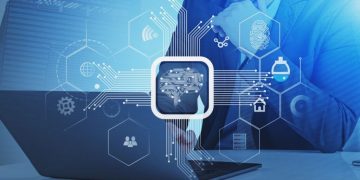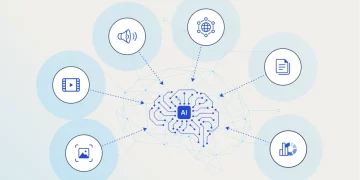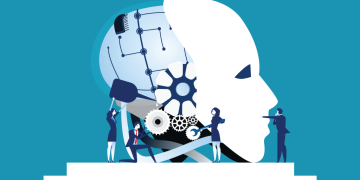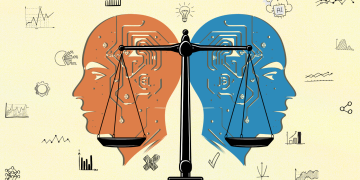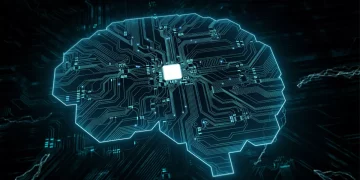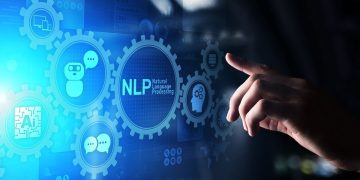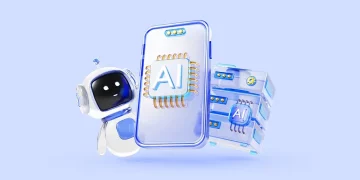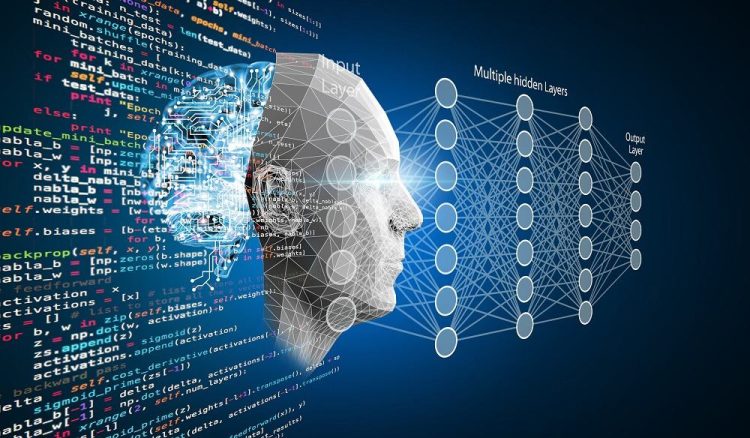In the rapidly evolving world of artificial intelligence (AI), machine learning (ML) has become the cornerstone of many applications, from natural language processing to computer vision and recommendation systems. As AI developers embark on machine learning projects, selecting the right framework is a crucial step that can significantly impact the success, scalability, and performance of the project. The sheer number of machine learning frameworks available can be overwhelming, with each offering distinct advantages and limitations based on the specific needs of the project.
This article provides a detailed analysis of the most popular AI frameworks in use today and offers guidance on how AI developers can choose the right one for their machine learning tasks. We’ll explore the key features, strengths, and weaknesses of the leading frameworks, including TensorFlow, PyTorch, Keras, Scikit-learn, MXNet, and others, and discuss which types of tasks each is best suited for.
1. Understanding the Importance of Frameworks in Machine Learning
Machine learning frameworks are software libraries or toolkits designed to streamline the development process of machine learning models. They provide pre-built components, including mathematical functions, optimization algorithms, and model architectures, to accelerate the development of machine learning systems. These frameworks simplify the implementation of complex algorithms, enabling developers to focus on their models rather than low-level programming tasks. The right framework can enhance productivity, improve model performance, and facilitate collaboration.
Key Considerations When Choosing a Framework
Several factors influence the choice of a machine learning framework, including:
- Ease of Use: The simplicity of the framework and its learning curve.
- Performance: How well the framework handles large-scale data and complex computations.
- Flexibility: The framework’s ability to adapt to diverse machine learning tasks.
- Community Support: The availability of documentation, tutorials, and an active developer community.
- Scalability: Whether the framework can scale from small prototype models to large production systems.
- Compatibility: How well the framework integrates with other tools, libraries, and platforms.
2. TensorFlow: The Powerhouse for Large-Scale Machine Learning
TensorFlow, developed by Google Brain, is one of the most widely used machine learning frameworks in the world. Its popularity stems from its scalability, robust ecosystem, and versatile tools for building a variety of machine learning models, from simple linear regressions to complex deep learning architectures. TensorFlow is designed to work seamlessly across multiple platforms, making it ideal for both research and production environments.
Strengths of TensorFlow
- Scalability: TensorFlow is built for large-scale machine learning, capable of handling large datasets and distributed training across multiple machines.
- TensorFlow Extended (TFX): A comprehensive end-to-end solution for deploying machine learning models in production.
- Community and Ecosystem: With strong community support, TensorFlow offers numerous pre-built models, tools, and documentation, making it easier for developers to get started.
- Integration with Other Tools: TensorFlow integrates well with Google Cloud and supports a wide range of third-party tools and libraries.
When to Use TensorFlow
- Deep Learning: TensorFlow is especially suitable for large neural networks, including deep neural networks (DNNs) and convolutional neural networks (CNNs).
- Production Systems: Its scalability and deployment tools make it ideal for creating machine learning models that need to be deployed in real-world applications.
- Research to Production: TensorFlow supports the full lifecycle of machine learning, from prototyping to production.
Limitations
While TensorFlow is highly scalable and feature-rich, it can have a steep learning curve for beginners. Its syntax and debugging process may be complex, particularly for those new to machine learning or deep learning.
3. PyTorch: The Developer-Friendly Deep Learning Framework
PyTorch, developed by Facebook’s AI Research lab, has gained significant popularity among AI researchers and developers. Known for its ease of use and dynamic computational graph, PyTorch is a framework that allows for rapid experimentation and flexibility in building machine learning models.
Strengths of PyTorch
- Dynamic Computational Graphs: PyTorch’s dynamic nature makes it easier to debug and experiment with models.
- Flexibility: Developers can easily modify the architecture of models, making PyTorch ideal for research and prototyping.
- Strong Adoption in Academia: PyTorch is the framework of choice for many researchers, making it ideal for cutting-edge AI projects.
- Integration with Python: PyTorch’s deep integration with Python makes it easy to use, particularly for Python developers.
When to Use PyTorch
- Research and Prototyping: PyTorch’s flexibility and dynamic computation graph make it perfect for researchers working on innovative models.
- Deep Learning: Like TensorFlow, PyTorch excels in handling complex neural networks, including CNNs and recurrent neural networks (RNNs).
- Rapid Development: Its user-friendly interface allows for faster experimentation and iteration.
Limitations
While PyTorch has many advantages for research and prototyping, it may not be as well-suited for production systems requiring scalability and robustness. However, recent developments like PyTorch JIT (Just-in-Time) compilation and integration with production frameworks are mitigating this limitation.

4. Keras: Simplifying Deep Learning with a High-Level API
Keras is a high-level neural network API written in Python that runs on top of TensorFlow, Microsoft Cognitive Toolkit (CNTK), or Theano. Keras was developed to make building deep learning models as simple and user-friendly as possible. In 2025, Keras is fully integrated into TensorFlow as TensorFlow Keras, making it easier to create deep learning models in TensorFlow.
Strengths of Keras
- Ease of Use: Keras provides an intuitive and user-friendly API for building deep learning models.
- Quick Prototyping: It allows for fast prototyping, enabling developers to experiment with different architectures and hyperparameters quickly.
- Flexibility and Extensibility: Keras supports a wide range of layers, models, and loss functions, allowing for easy customization.
- Integration with TensorFlow: Since Keras is tightly integrated with TensorFlow, it benefits from TensorFlow’s powerful features like scalability and deployment tools.
When to Use Keras
- Beginner-Friendly Deep Learning: Keras is perfect for beginners who want to start working with deep learning models without getting bogged down in the complexity of low-level code.
- Rapid Prototyping: Developers looking to quickly prototype machine learning models will appreciate Keras’ ease of use.
- Deep Learning with TensorFlow: When using TensorFlow, Keras provides a simple, high-level interface for building models.
Limitations
Keras may not be as flexible as other frameworks like PyTorch for more complex and custom models. However, its simplicity makes it a good starting point for beginners.
5. Scikit-learn: The Go-To Framework for Classical Machine Learning
While deep learning frameworks like TensorFlow and PyTorch often steal the spotlight, Scikit-learn remains the framework of choice for classical machine learning tasks such as regression, classification, and clustering. Scikit-learn is a Python-based library that offers a wide range of algorithms for traditional machine learning tasks.
Strengths of Scikit-learn
- Simple and Easy to Use: Scikit-learn provides a clean and intuitive API for implementing machine learning algorithms.
- Comprehensive Collection of Algorithms: It includes a broad range of machine learning models, such as decision trees, random forests, and support vector machines (SVMs).
- Compatibility with Other Libraries: Scikit-learn works well with other Python libraries like NumPy, pandas, and Matplotlib, enabling smooth data processing and visualization.
- Excellent Documentation: Scikit-learn offers comprehensive and clear documentation, making it easy for developers to get started.
When to Use Scikit-learn
- Classical Machine Learning Tasks: Scikit-learn is ideal for tasks like classification, regression, clustering, and dimensionality reduction.
- Quick Prototyping: Scikit-learn is excellent for quickly testing out machine learning models on structured datasets.
- Small to Medium-Sized Data: It works well with small to medium-sized datasets, though it may struggle with large-scale data and complex neural networks.
Limitations
Scikit-learn is not suitable for deep learning tasks or working with large-scale datasets. For complex neural networks, TensorFlow, PyTorch, or Keras would be a better fit.
6. Choosing the Right Framework: A Decision-Making Process
The key to selecting the right machine learning framework lies in understanding the project’s requirements and the specific tasks you need to perform. Here’s a quick decision-making guide:
- For Deep Learning: TensorFlow, PyTorch, or Keras (TensorFlow Keras) are the best choices.
- For Classical Machine Learning: Scikit-learn is the go-to framework for traditional models like regression, classification, and clustering.
- For Rapid Prototyping: Keras is ideal for quickly building and testing deep learning models.
- For Flexibility and Research: PyTorch is perfect for researchers who require flexibility and ease of experimentation.
- For Scalability and Production: TensorFlow is best suited for large-scale applications that need to scale across multiple systems and platforms.
7. Conclusion
Selecting the right framework for machine learning projects in 2025 is critical to the success of AI development. Each framework offers unique strengths, and the decision largely depends on the specific needs of the project, whether that’s flexibility, scalability, ease of use, or the ability to work with large datasets. TensorFlow, PyTorch, Keras, and Scikit-learn are some of the leading frameworks, and understanding their strengths and limitations allows AI developers to make informed decisions.







